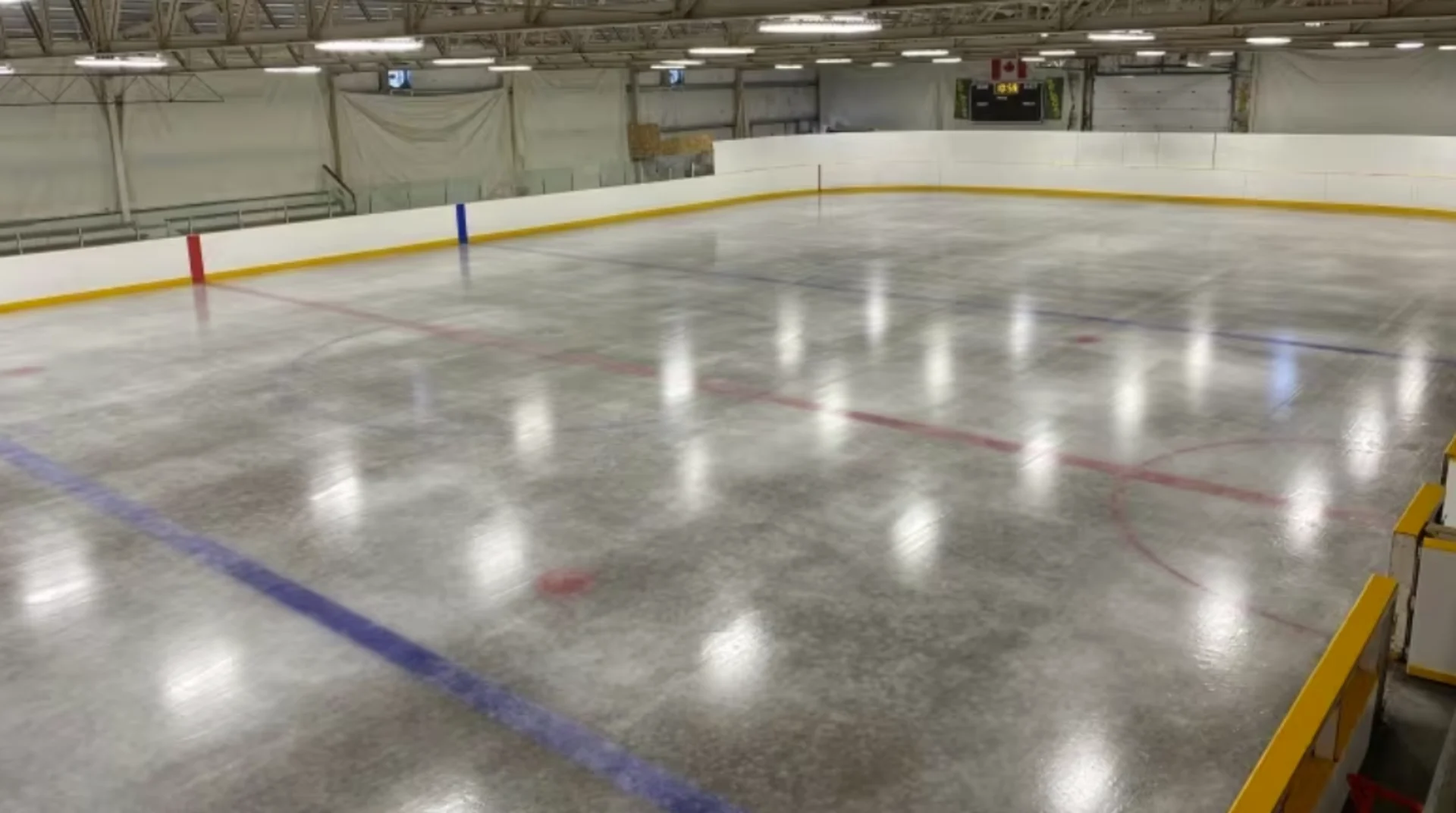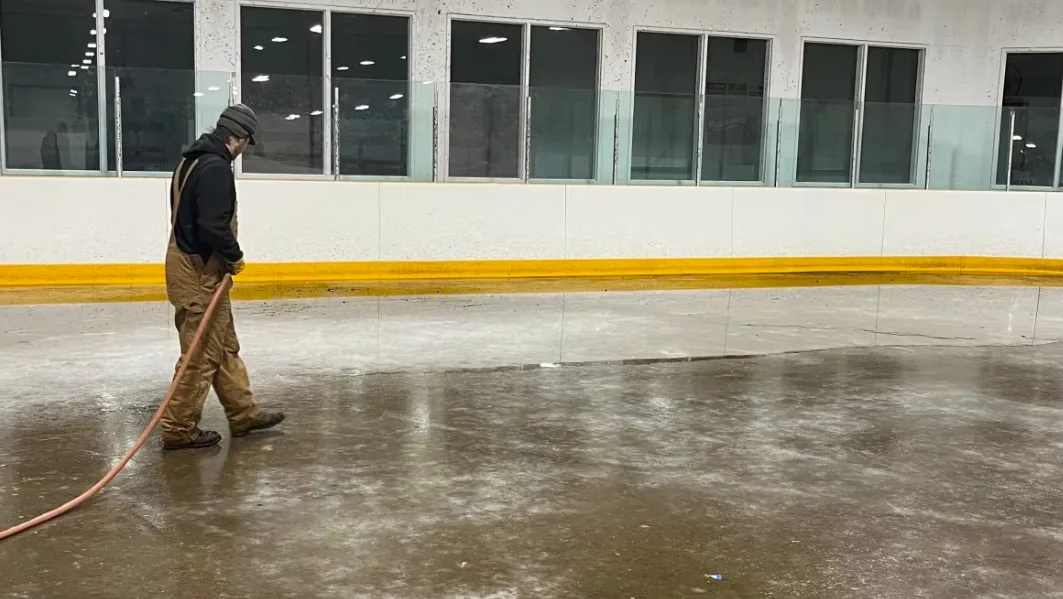
Sask. town struggles to solidify natural ice rink in warm winter season
Saskatchewan's winters are typically harsh, greeting residents with a hard-biting chill. This season, though, the weather has been more friendly than usual — and the natural ice rinks winter usually fosters in small towns are going soft.
The ice rink in Radisson, northwest of Saskatoon, is usually ready for skating in November. Its caretaker, Don Harris, said this year, skaters have only recently been able to use it, and it's still not up to par.
"When we had some cool days or colder days in [the] late part of November, early part of December, we basically never shut the right lights out here — for about four days we went around the clock trying to get the ice in," said Harris, who has been the rink's caretaker for more than 20 years.
"I think we're one of the very, very few communities in Saskatchewan with natural ice that have our ice in," he said, attributing the success to a fan system in the rink and the people who — like him — volunteer to put the ice in.
RELATED: N. Sask. residents concerned about supplies as ice roads delayed by warm winter
It's been a challenge given the relatively warm temperatures this year, though. In nearby Saskatoon, about 60 kilometres from Radisson, temperatures rarely dropped below —15 C in November or December, according to Environment Canada. In mid-November, temperatures reached 11 C.
At this point last year, temperatures in the area were commonly dipping well below –20 C. On Dec. 23, 2022, Environment Canada recorded a low of –37 C.
Harris said some recent cooler days and colder nights have helped maintain the ice. Still, the heat from the lobby area has led parts of it to soften and driven the rink workers to use some creative techniques.
Harris described padding down snow driven in from Langham and freezing it with the contents of a fire extinguisher.
Before the ice finally set this year, Harris said he had to cancel tournaments. Figure skaters and the senior hockey team, the Radisson Wheat Kings, were forced to rent ice in nearby towns.
Despite the weather issues this year, Harris is skeptical the 466-person town could fund the transition to an artificial rink without grants or government help, which he thinks aren't likely to happen in such a small community.

Rink workers say they have had to work odd hours and use creative solutions to set and maintain the ice in Radisson. Pictured here, one rink volunteer floods the ice in late November. (Submitted by Dustin Bezugly)
Communities with natural ice rinks are aware they need to have contingency plans for their minor hockey leagues in case the season is warmer than usual, according to Hockey Saskatchewan general manager Kelly McClintock.
They typically rely on nearby communities, he said, as Radisson has this season.
SEE ALSO: Warm, dry winter has increased the wildfire risk in Alberta
"They can't rely on a specific start date for their communities," McClintock said.
Carter Anson, one of the volunteers who has been flooding Radisson's rink alongside Harris, said the community has been understanding about the rink conditions, given the warm season.
"All you can do is keep patching it and hoping it gets to –20 sometime," Anson said.
Thumbnail image courtesy of Jenny Thompson via CBC News.
This article, written by Dayne Patterson, was originally published for CBC News. With files from Halyna Mihalik









